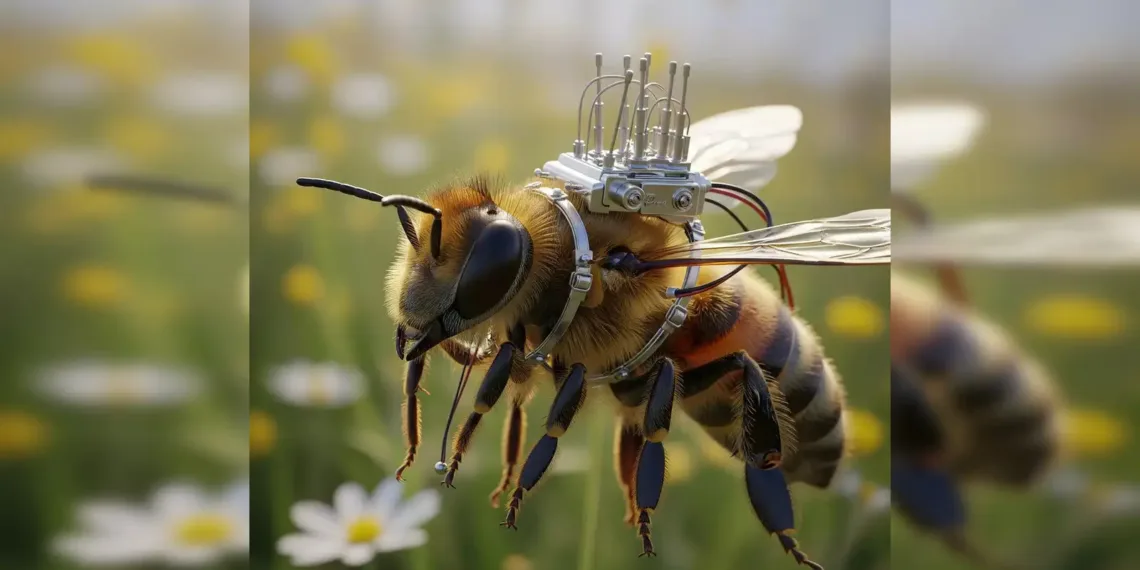China has once again pushed the boundaries of technology, unveiling the world’s lightest mind controller that can turn ordinary bees into military cyborgs. As per the latest report, this is not just a leap for science but also raises fascinating questions about the future of bio-robotics and defense.
Table of Contents
What Is the Mind Controller for Bees?
Chinese scientists have developed a microchip device weighing just 0.15 grams—lighter than a bee itself! This device can be attached to a bee’s back, allowing researchers to remotely control its movements. The technology uses neural stimulation to guide the bee, effectively turning it into a living drone.

Quick Facts Table
| Feature | Details |
|---|---|
| Device Weight | 0.15 grams |
| Controlled Species | Honeybees |
| Technology Used | Neural stimulation, microchip, wireless control |
| Main Purpose | Surveillance, search and rescue, military reconnaissance |
| Developed By | Chinese scientists (official research) |
Why Turn Bees Into Cyborgs?
Bees are small, agile, and can access places that drones or humans cannot. By controlling bees, scientists can use them for surveillance in tight spaces, search and rescue missions in disaster zones, or even military reconnaissance. This technology could revolutionize how we approach security and rescue operations.
For more on how technology is transforming defense and surveillance, check out TechnoSports’ Tech News section.
How Does the Mind Controller Work?
The device is a tiny microchip that sends electrical signals to the bee’s brain, guiding its flight path. It’s powered wirelessly, so there’s no need for heavy batteries. The bee can be steered left, right, up, or down, all through remote commands. This is a significant improvement over previous attempts, which were bulkier and less precise.

Table: Bee Cyborg vs. Traditional Drones
| Aspect | Bee Cyborg | Traditional Drone |
|---|---|---|
| Size | Extremely small (bee-sized) | Varies, usually much larger |
| Stealth | High (looks like a real bee) | Low to moderate |
| Battery Life | No battery needed (wireless) | Limited by battery |
| Maneuverability | Excellent in tight spaces | Limited in small areas |
| Cost | Potentially lower | Higher |
Ethical and Environmental Concerns
While the technology is impressive, it raises ethical questions about animal welfare and the potential misuse of bio-robotics. There are also concerns about the impact on bee populations, which are already under threat globally. Responsible use and strict regulations will be crucial as this technology develops.
For more insights on ethical tech and innovation, visit TechnoSports’ Science section.
FAQs
Q1: What are the main uses of bee cyborgs?
A: Bee cyborgs can be used for surveillance, search and rescue in disaster zones, and military reconnaissance. Their small size and agility make them ideal for accessing hard-to-reach places.
Q2: Is this technology safe for bees?
A: While the device is lightweight and designed to minimize harm, long-term effects on bee health are still being studied. Ethical concerns remain, and further research is needed to ensure the well-being of the bees.








